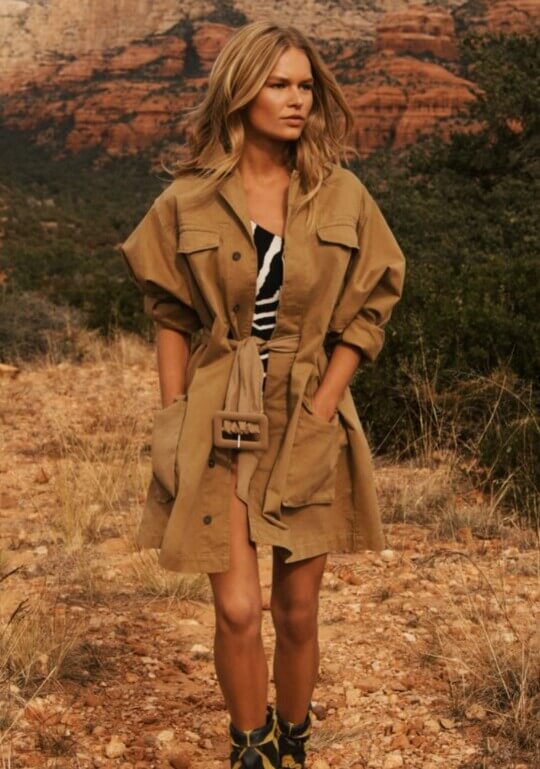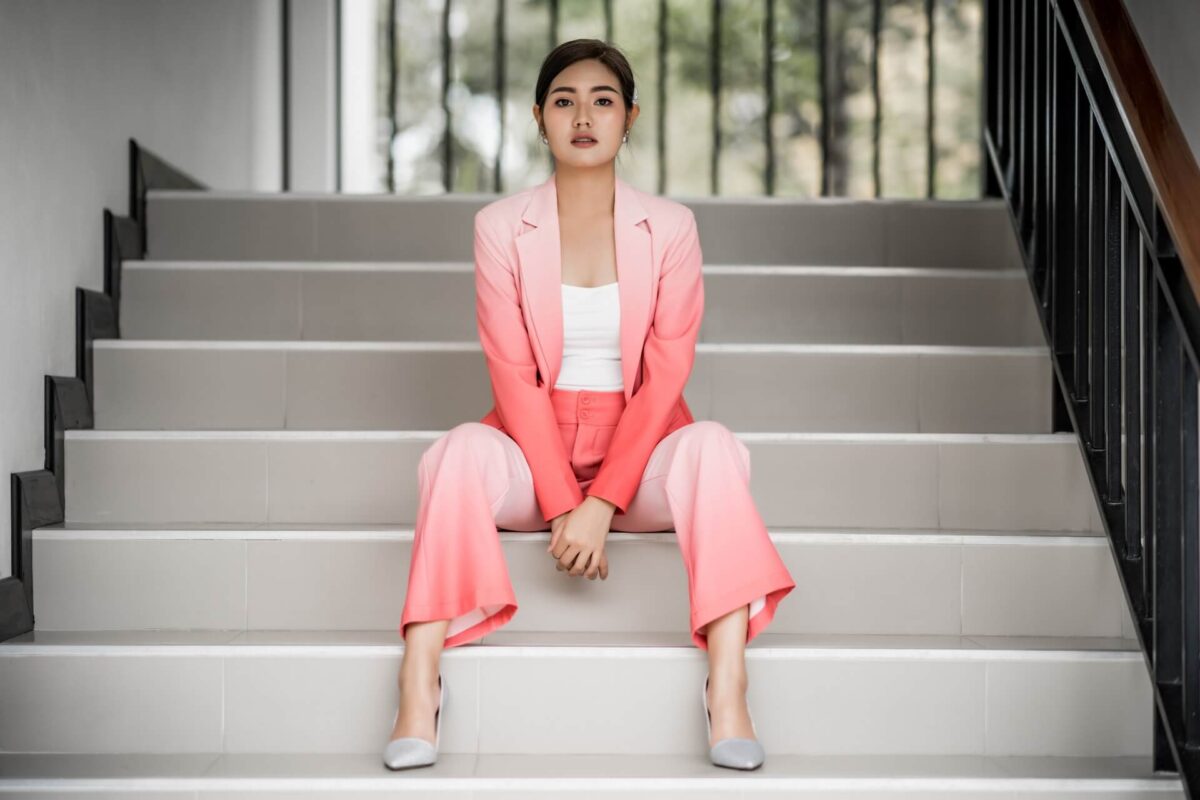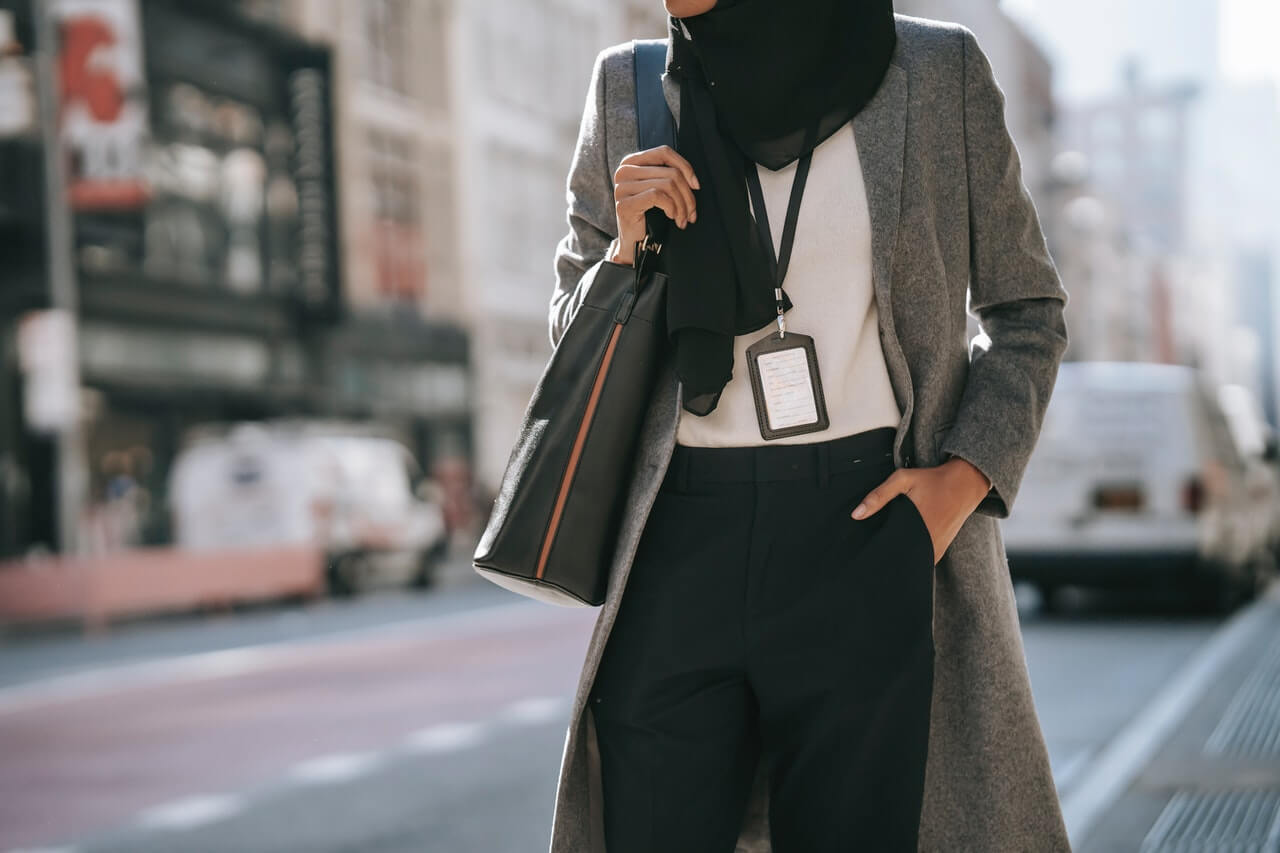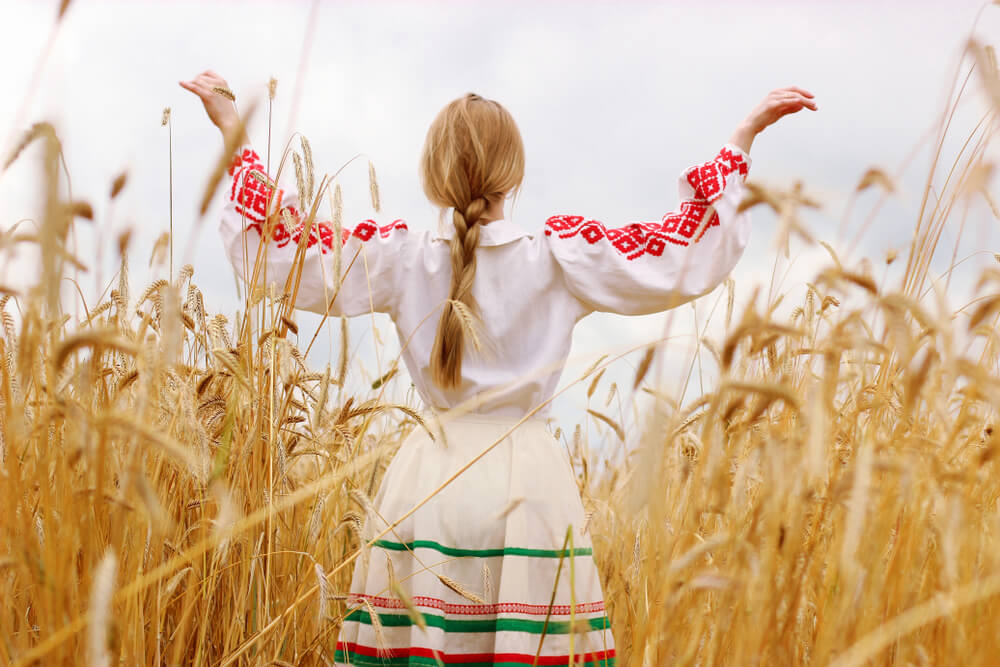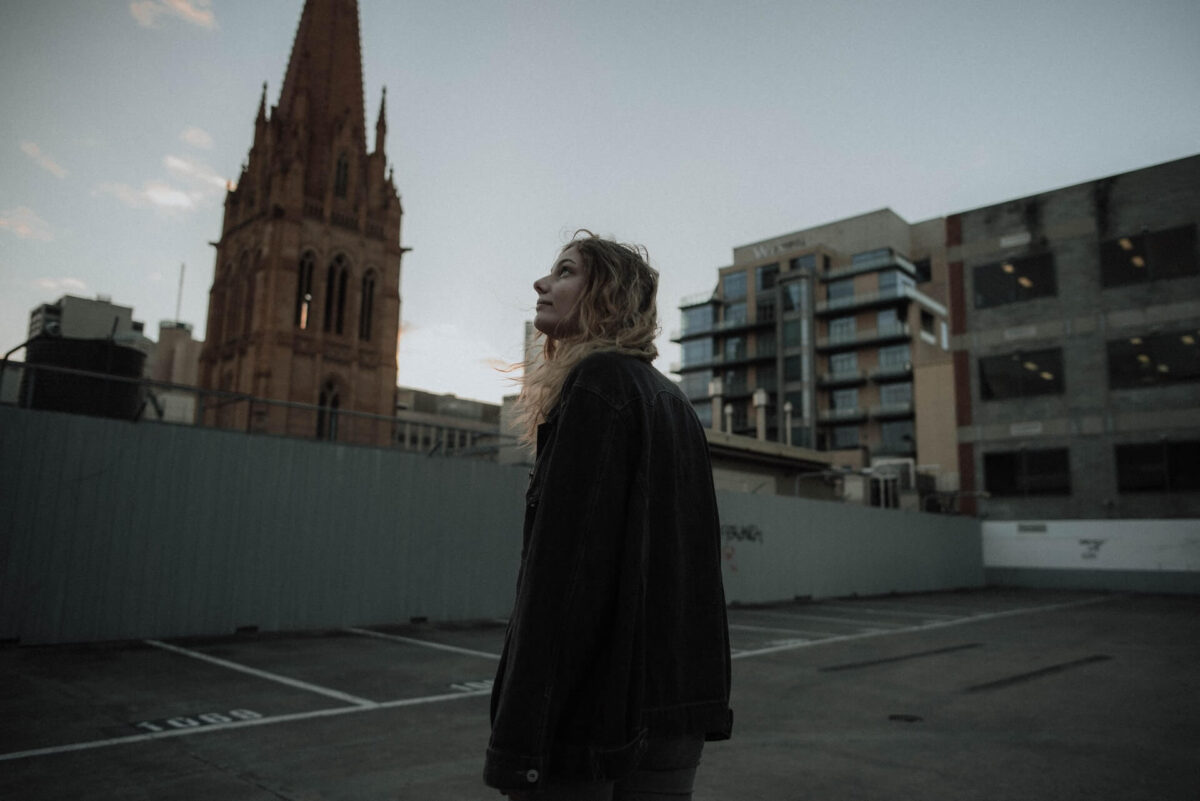
The style of safari, in the usual sense, that is, as clothing for travel, appeared in the 1930's, but its inclinations date back to an even earlier 1900. At that time, the British military was stationed in South Africa, where the climate did not allow the use of a standard form - something light and air-permeable, but functional and practical, was required.
It was the military uniform developed then that later became the basis for the formation of the safari style, as a separate direction in clothing.  The military uniform was a cotton shirt with patch pockets, a high collar and a belt. Shorts were sewn according to the same principle. The color scheme was selected in accordance with the environment - olive, brown, beige, that is, all those that helped to merge with the terrain and not to give themselves over to the enemy.
The military uniform was a cotton shirt with patch pockets, a high collar and a belt. Shorts were sewn according to the same principle. The color scheme was selected in accordance with the environment - olive, brown, beige, that is, all those that helped to merge with the terrain and not to give themselves over to the enemy. 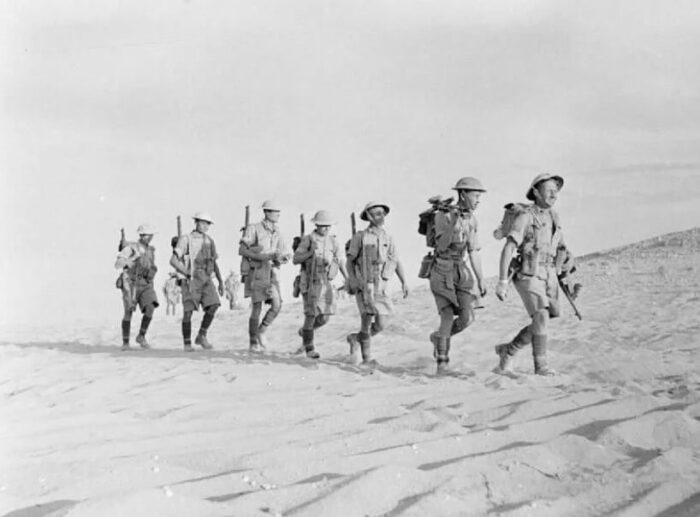 Later, in the 1930's, the military, who were on duty in the territory of the already conquered Africa, tried to find entertainment. The choice was small, so the main occupation was hunting local animals.
Later, in the 1930's, the military, who were on duty in the territory of the already conquered Africa, tried to find entertainment. The choice was small, so the main occupation was hunting local animals.
So the clothes were combined with the term "safari". The emergence of the safari style in women's fashion was facilitated by Yves Saint Laurent, who in the 60's popularized this stylistic direction, releasing a collection of clothes for the journey of the elite to tropical countries.
Couturier outfits included a cotton sundress, which later became known as a "safari dress", as well as a jacket with patch pockets, imitation of epaulettes and a belt. The color scheme, of course, was natural, so as not to stand out against the background of wild nature. 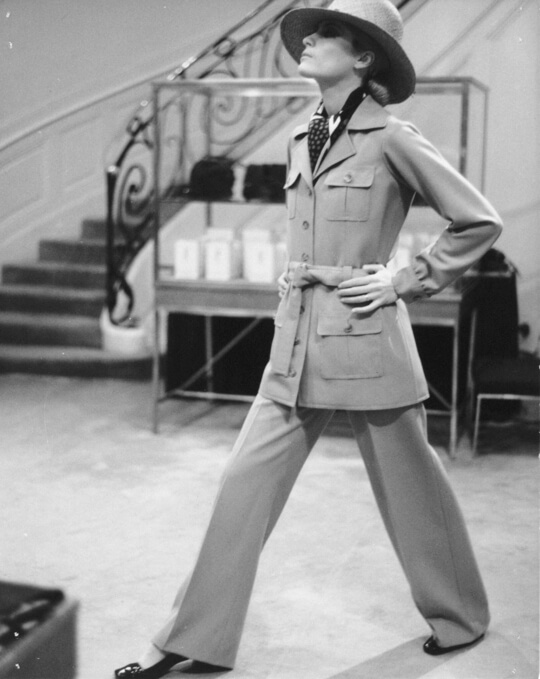 Since then, the style of safari for women began to appear more and more often on the catwalks - fashion houses and brands offered collections of stylish outfits on a break.
Since then, the style of safari for women began to appear more and more often on the catwalks - fashion houses and brands offered collections of stylish outfits on a break.
Most of the things presented today are far from clothes for Africa, but it is great for an urban safari - hunting for stylish images and traveling to fashionable establishments of big cities. Periodically, Dolce & Gabbana, Balmain, Hermes and other famous brands and fashion houses turn to the stylistic direction. 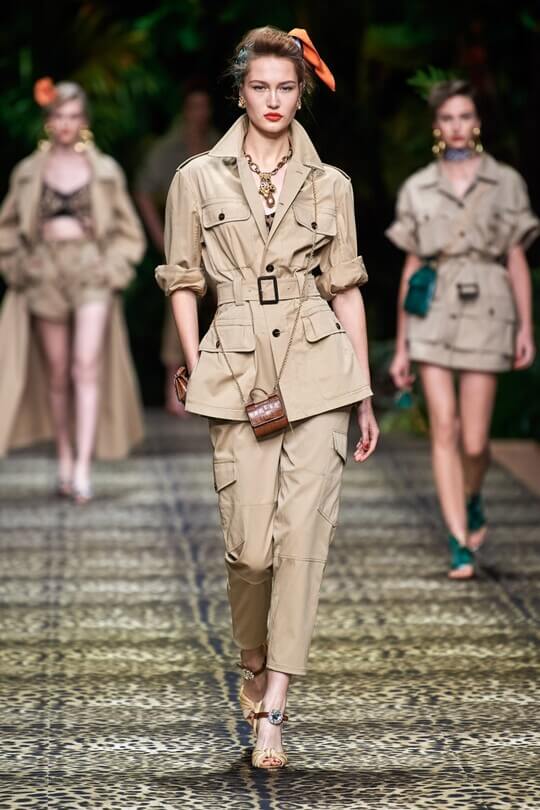

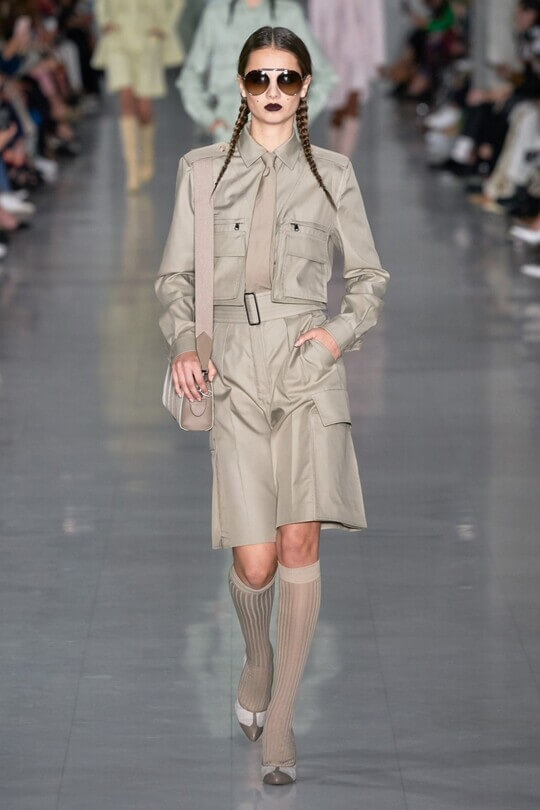
Practicality, comfort and convenience come to the fore when compiling a wardrobe in the style of safari. Outfits are most often free, not constraining movements. Materials are pleasant to the body, easy to wash, as well as those on which dirt is not very noticeable.  Related to the issue of practicality are typical safari style patch pockets – just imagine how much everything will fit in them!
Related to the issue of practicality are typical safari style patch pockets – just imagine how much everything will fit in them!
This principle is often compromised by modern fashion, but if you want to dress in the style of a real safari, then choose a breathable fabric, best of all - cotton or linen. Initially, this characteristic of safari-style clothing was one of the main ones, since in the conditions of hot Africa, synthetic, too dense and air-resistant fabrics significantly complicated life. 
If you are not going to Africa, then it is permissible to slightly diversify the palette - add gray, white, slightly more saturated shades. Typical for safari are brown, beige, olive, khaki, like bones. The total looks interesting and often it is monochrome images that become the basis of the safari style for women.  Initially, white, dark blue and black were banned, as they attracted insects and strongly distinguished a person from nature. Of course, for a city safari, everything is much simpler, but it is in the original, natural palette that the safari style looks especially impressive.
Initially, white, dark blue and black were banned, as they attracted insects and strongly distinguished a person from nature. Of course, for a city safari, everything is much simpler, but it is in the original, natural palette that the safari style looks especially impressive. 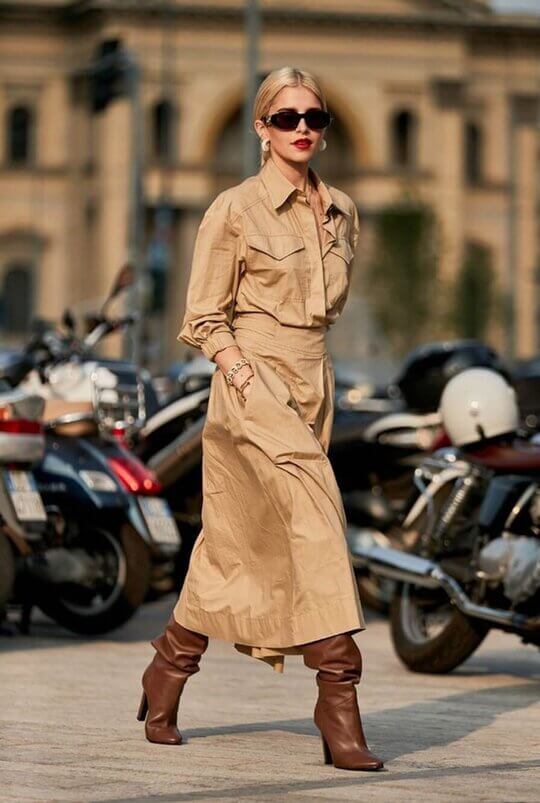 Animal print is used as a print - it also helps to "disguise", but in excess turns safari into animalism.
Animal print is used as a print - it also helps to "disguise", but in excess turns safari into animalism.
"Easy" is the key word here, so don't overdo it. A released hem of the top, unbuttoned upper buttons of the jacket or a hastily tied shirt will do. These techniques add to the "life" way of life.
Both safari and military style in women's fashion are a reference to military clothing, so it will not be superfluous to understand the difference between these two directions. The first thing that every fashionista should know is that safari does not accept camouflage.
The fact is that in some African countries, a camouflage outfit is regarded negatively. Because of this, periodically tourists have problems. Therefore, camouflage outfits are the lot of the military, but a completely inappropriate print for the style of the traveler.  In addition, the military is characterized by greater "rigidity and severity", both in the images as a whole and in the materials. Safari is much softer, more feminine, it refers not so much to the military as to travelers. For the army style, denser, stiffer fabrics are selected, while the safari is built on linen and cotton outfits that allow you to calmly endure the heat.
In addition, the military is characterized by greater "rigidity and severity", both in the images as a whole and in the materials. Safari is much softer, more feminine, it refers not so much to the military as to travelers. For the army style, denser, stiffer fabrics are selected, while the safari is built on linen and cotton outfits that allow you to calmly endure the heat. 
The choice of things in the style of safari today is huge - 1-2 items are found in almost any store - from luxury to mass market. Next, we'll show you the basic things that are specific to the style, so you know what to look for on the shelves of boutiques.




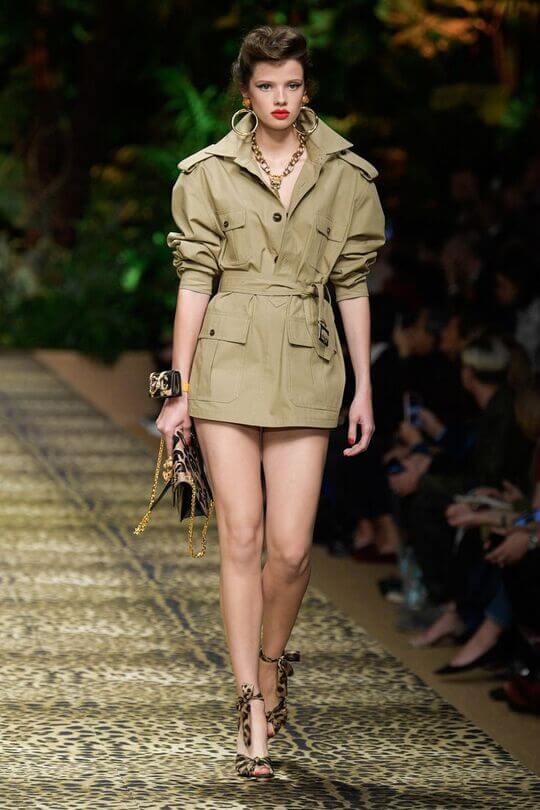

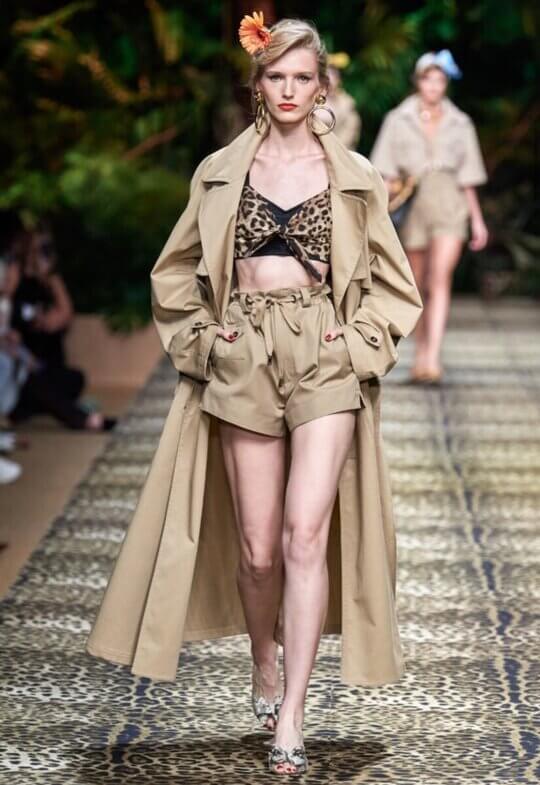

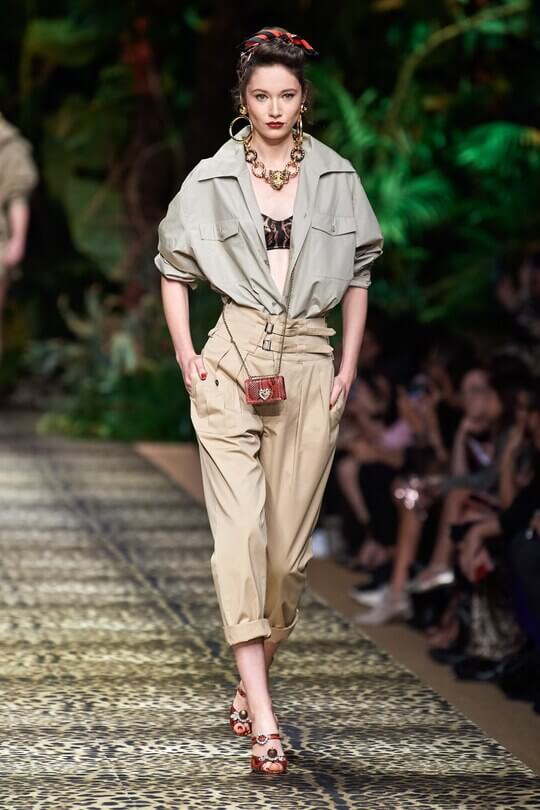
 The basic wardrobe will help to add zest and sexuality:
The basic wardrobe will help to add zest and sexuality:

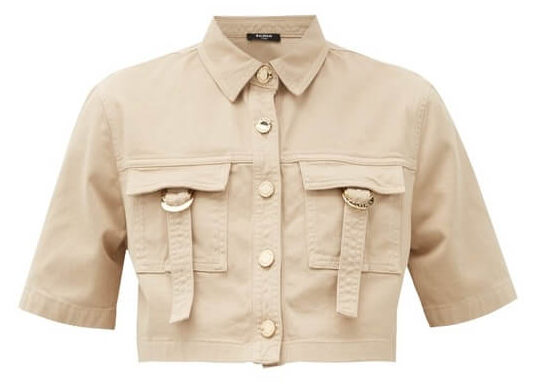
Initially, the safari style implied comfortable shoes, of course, without heels, but since we are talking about the female style of safari in modern life, it is allowed to use almost any pair - from boots and boots to braided slippers. In combination with trousers and jackets, sandals and heeled shoes look interesting. Especially good are models with imitation weaving or with many straps. 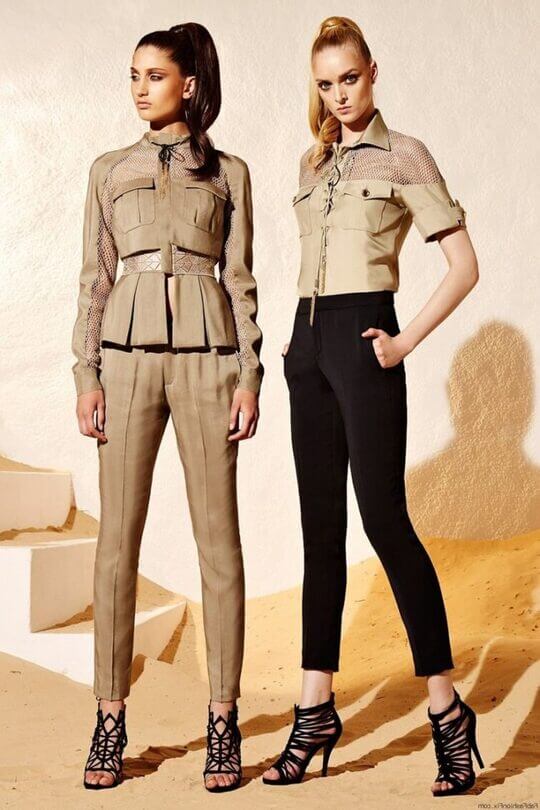 A stylish bright accent will be shoes in an animalistic style - under the leopard, for example.
A stylish bright accent will be shoes in an animalistic style - under the leopard, for example.  As for accessories - there are no strict requirements or prohibitions. A leather belt will fit perfectly into almost any bow - on the waist or on the hips.
As for accessories - there are no strict requirements or prohibitions. A leather belt will fit perfectly into almost any bow - on the waist or on the hips.  Sometimes to add a little "peppercorn" will help a fashionable bag with an animal print or a classic stylish handbag of restrained brown, gray or olive color. Also a laconic addition to the female safari style will be a small wicker bag.
Sometimes to add a little "peppercorn" will help a fashionable bag with an animal print or a classic stylish handbag of restrained brown, gray or olive color. Also a laconic addition to the female safari style will be a small wicker bag.  A more practical option is a postman made of dense fabric or a small bag.
A more practical option is a postman made of dense fabric or a small bag. 
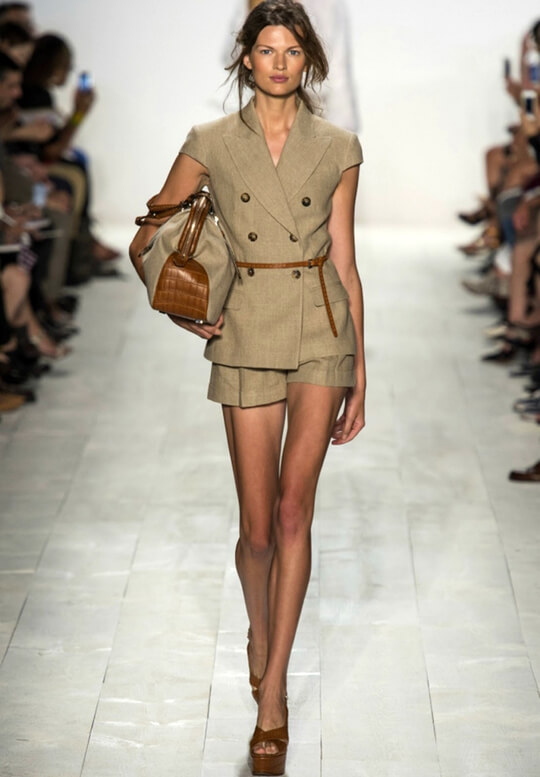 Turn an everyday look into a safari chic will help a neckerchief.
Turn an everyday look into a safari chic will help a neckerchief. 
An elegant, feminine safari style look for the summer with a midi-length skirt and a white base T-shirt.  Another option for summer safari-style clothing is a jumpsuit with shorts, a hat and sunglasses. Any braided sandals will do on the legs - with heels or flat soles. The accents are a straw bag and a leather belt.
Another option for summer safari-style clothing is a jumpsuit with shorts, a hat and sunglasses. Any braided sandals will do on the legs - with heels or flat soles. The accents are a straw bag and a leather belt.  And this is a safari for the autumn - the classic trench coat perfectly complements the outfit and is very suitable in style to the style of the hunter.
And this is a safari for the autumn - the classic trench coat perfectly complements the outfit and is very suitable in style to the style of the hunter. 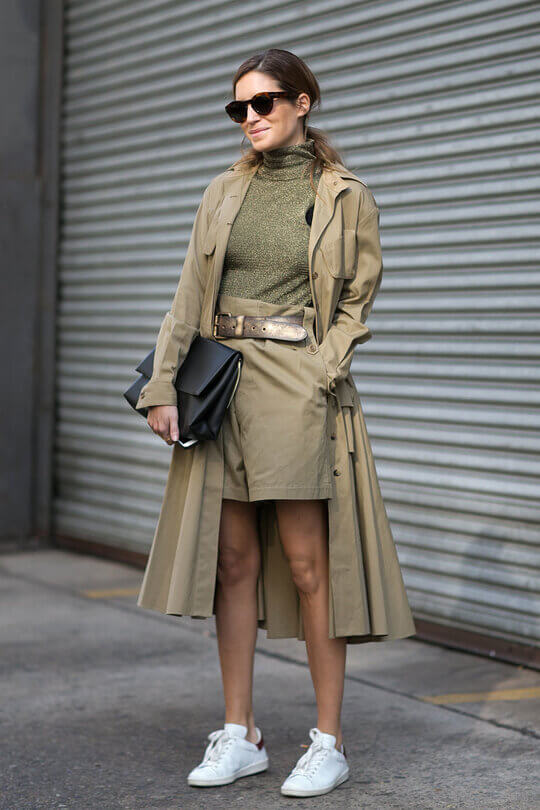 The style of safari clothing does not have to be strict – play with fabrics, combinations and styles. So, for example, looks feminine, even sexy bow.
The style of safari clothing does not have to be strict – play with fabrics, combinations and styles. So, for example, looks feminine, even sexy bow.  Another way to diversify the safari style is to add layering and animal print. Just one top with the color of a zebra makes the shirt with patch pockets play in a new way.
Another way to diversify the safari style is to add layering and animal print. Just one top with the color of a zebra makes the shirt with patch pockets play in a new way. 